Samsung Galaxy S10 vs Google Pixel 3

Every year, there’s a battle at the top of the Android food chain. Standing at the apex, typically, has been Samsung’s Galaxy S devices, and while many of the manufacturers Samsung used to face head-on have slipped further away from potentially usurping the mighty Galaxy, Google’s Pixel devices have come ever-closer.
Samsung’s Galaxy S10 and Google’s Pixel 3 are the latest and greatest from the two Android titans, and their reputations, or rather, their predecessors precede them in a number of ways. Cutting edge technology, sleek, class-leading designs, unique innovations, and cameras that turn the heads of even the most loyal iPhone users have made these latest handsets what they are today: two of the best phones money can buy.
Design
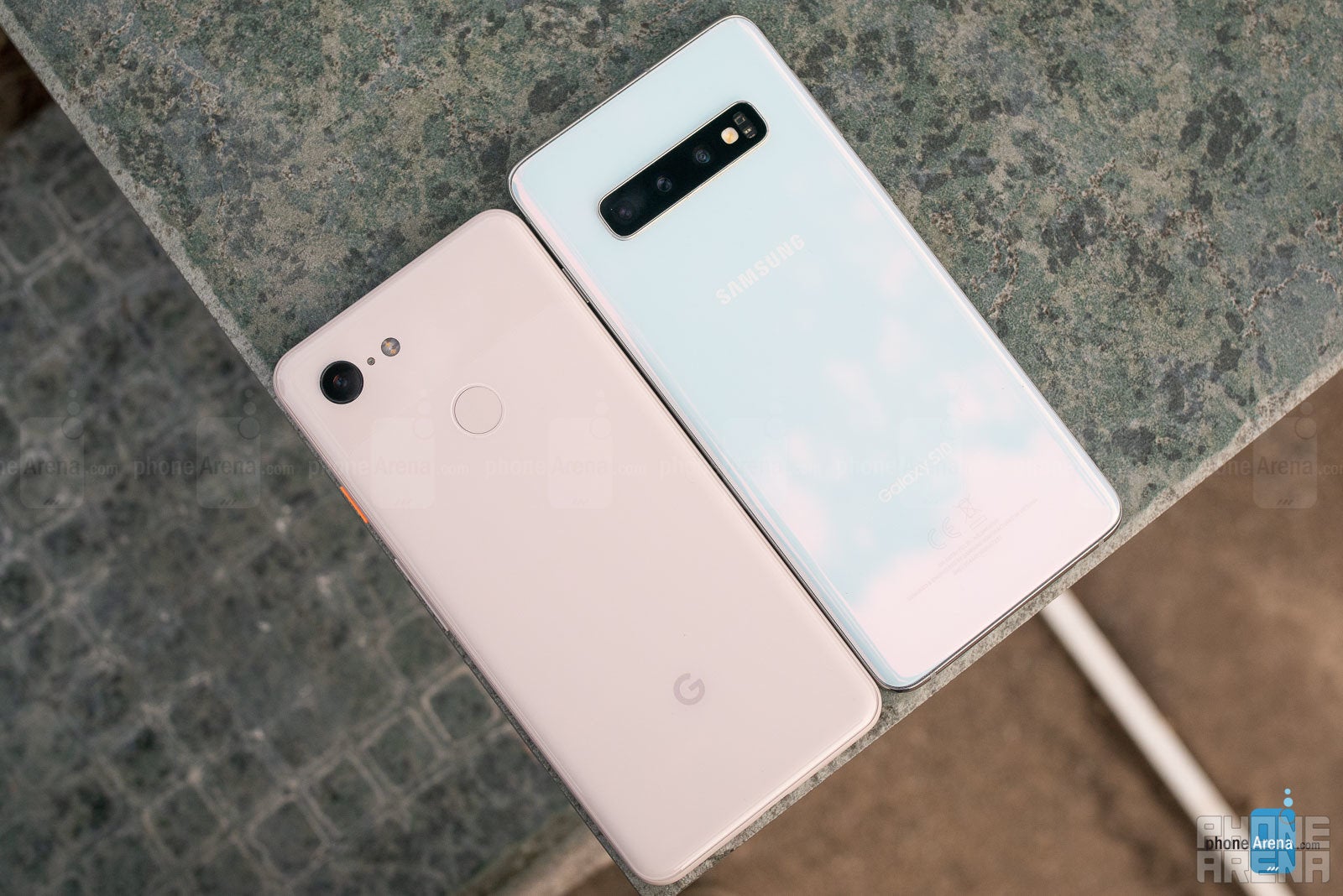
The S10 is arguably one of the best-looking phones out and frankly would’ve beat the 2018 Pixel 3 in aesthetics when it was still just a wee 2017 Galaxy S8. The S10’s only been refined further with ever-shrinking bezels thanks to the latest fashion trend: the punch-hole front-facing camera; and the latest in bio-metric – the in-display, ultrasonic fingerprint sensor. With the screen's curved edges flowing seamlessly into the metal frame and iridescent glass back, the Galaxy S10’s style is nothing short of eye-catching.
Display
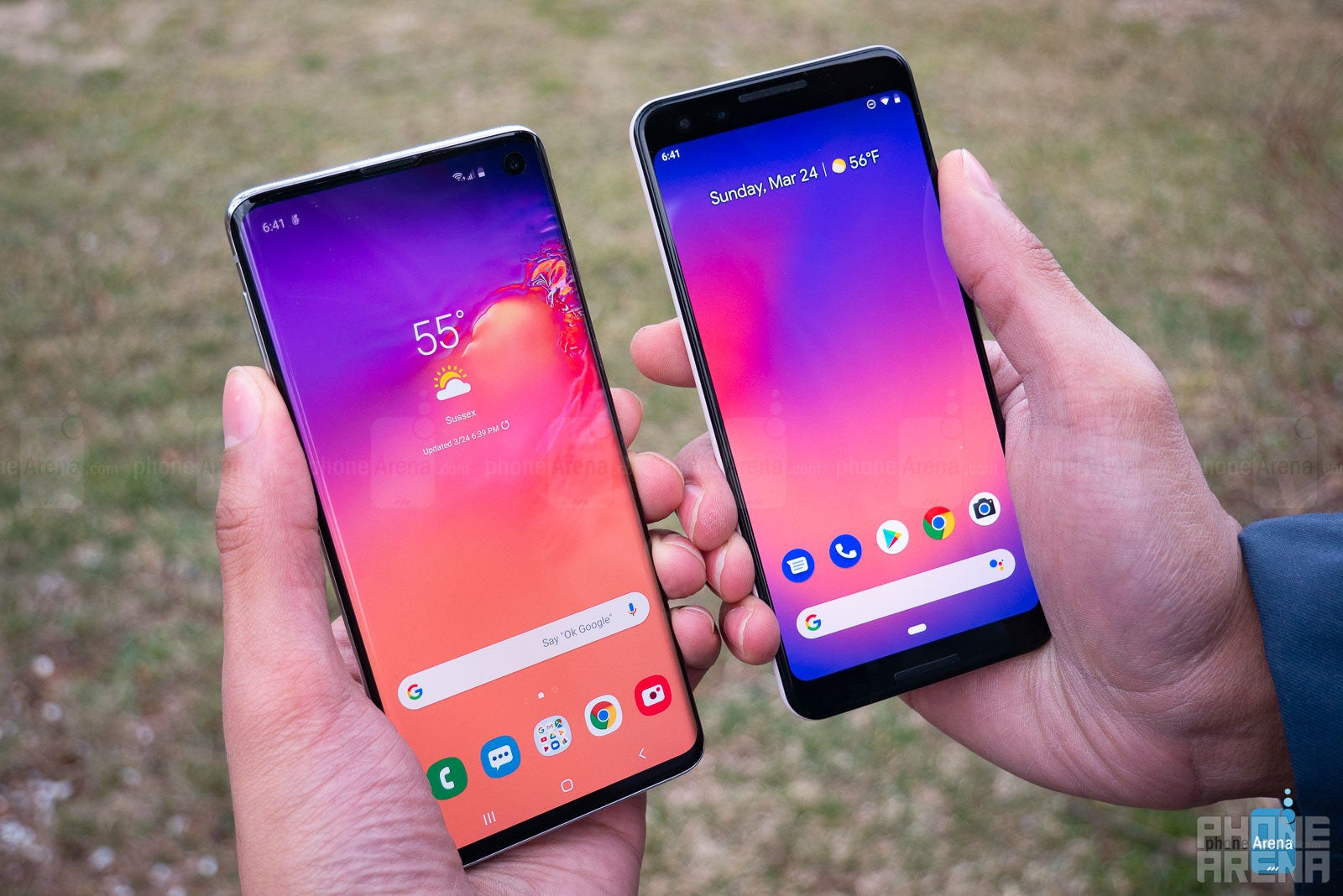
The Pixel 3 also portrays highly-accurate colors and offers a “boosted” color mode, but it does little to change the colors or overall experience on the Pixel 3. The Galaxy S10 not only dials in better, more distinct color modes, but it also gets a lot brighter when it needs to. We’ll easily hand this round to the S10.
Interface and Functionality
Samsung’s long been an avid tweaker of the Android platform, even as stock Android has become more feature-rich and pleasant to look at. Google launched the Pixel 3 with a handful of Pixel-exclusive features, mostly centered around AI, like Night Sight for low-light photography, Duplex for Google-Assistant-made restaurant reservations, and Call Screening, which screens and transcribes calls for you at the tap of a button.
Samsung’s One UI, on the other hand, centers most of its additions on aesthetics and navigational functionality, as is the case with its own take on gesture-based navigation, which we found to be only slightly easier to use, but every bit as clunky as the Pixel 3’s Android Pie gesture nav, and still a far cry from the smooth, intuitive operation found on the latest iPhones. This aside, Samsung expresses a lot of artistic licensing in the S10’s UI, moving things around a bit, tweaking some functions here and there, and extending much of that customization to the user, as well.
On the other hand, being able to screen spam callers and take night time pictures in almost impossible settings are drool-worthy features that we’d much sooner ditch our S10 for in favor of the Pixel 3.
Bixby vs Google Assistant
In terms of informational queries, as expected, Bixby can’t measure up to the Google Assistant’s more sophisticated search and speech-recognition algorithms, but it does do some things Google’s assistant can’t when it comes to pro-active and reactive routines.
In the end, though, most people won’t find Bixby’s on-device functionalities to be a compelling enough sell over the Google Assistant for them to forget about trump-card, exclusive features like Duplex and Call Screening on the Pixel 3.
Processor, Memory, and Performance
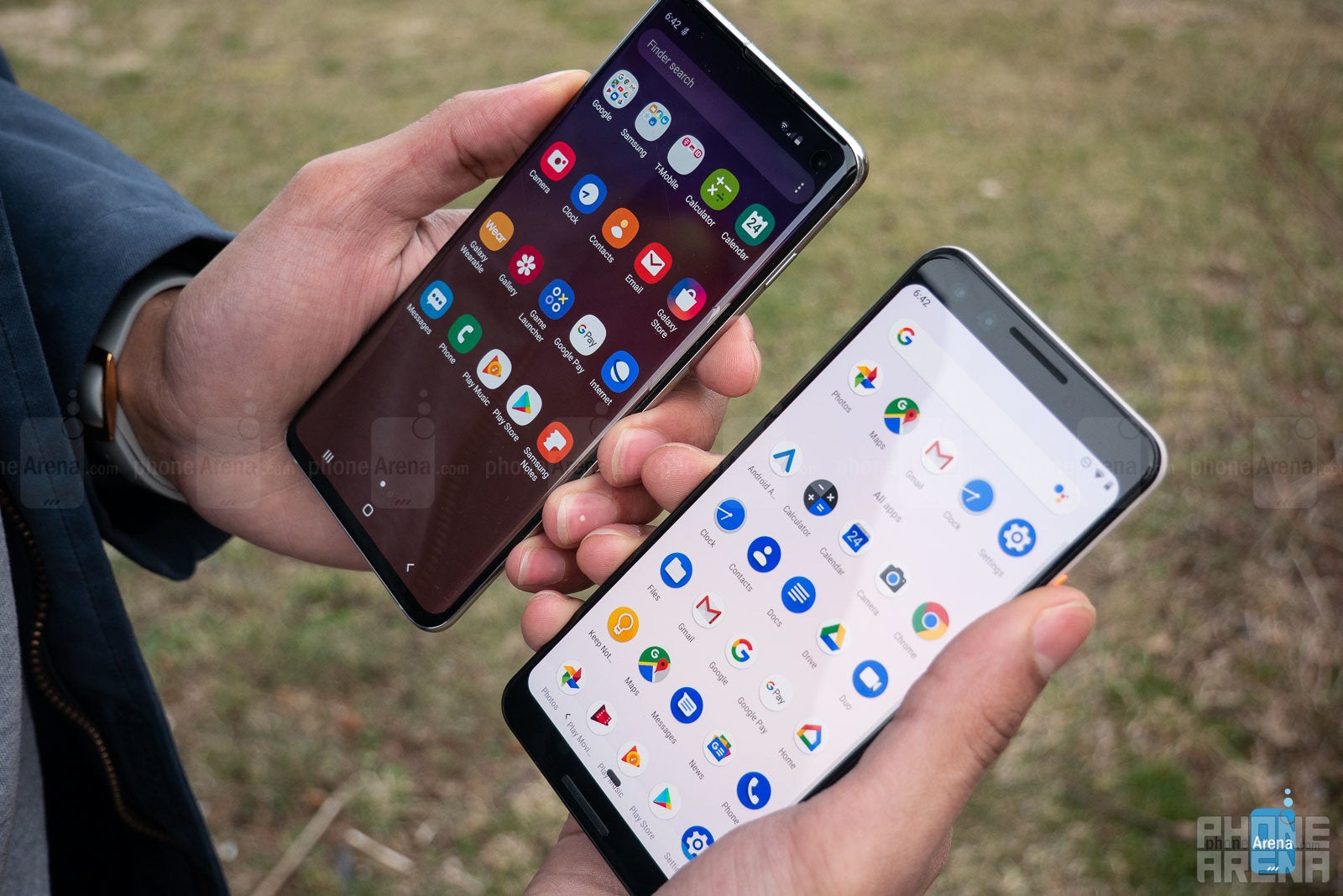
Camera
You might expect a clear advantage from the Galaxy S10 in the camera department, considering it has three compared to the Pixel 3’s single shooter, but more doesn’t always mean better. The S10 has a 12 MP main camera, a second 12 MP camera with a telephoto lens, and a third ultra-wide-angle camera with a 16 MP sensor all competing with the Pixel 3’s lone 12.2 MP main camera.
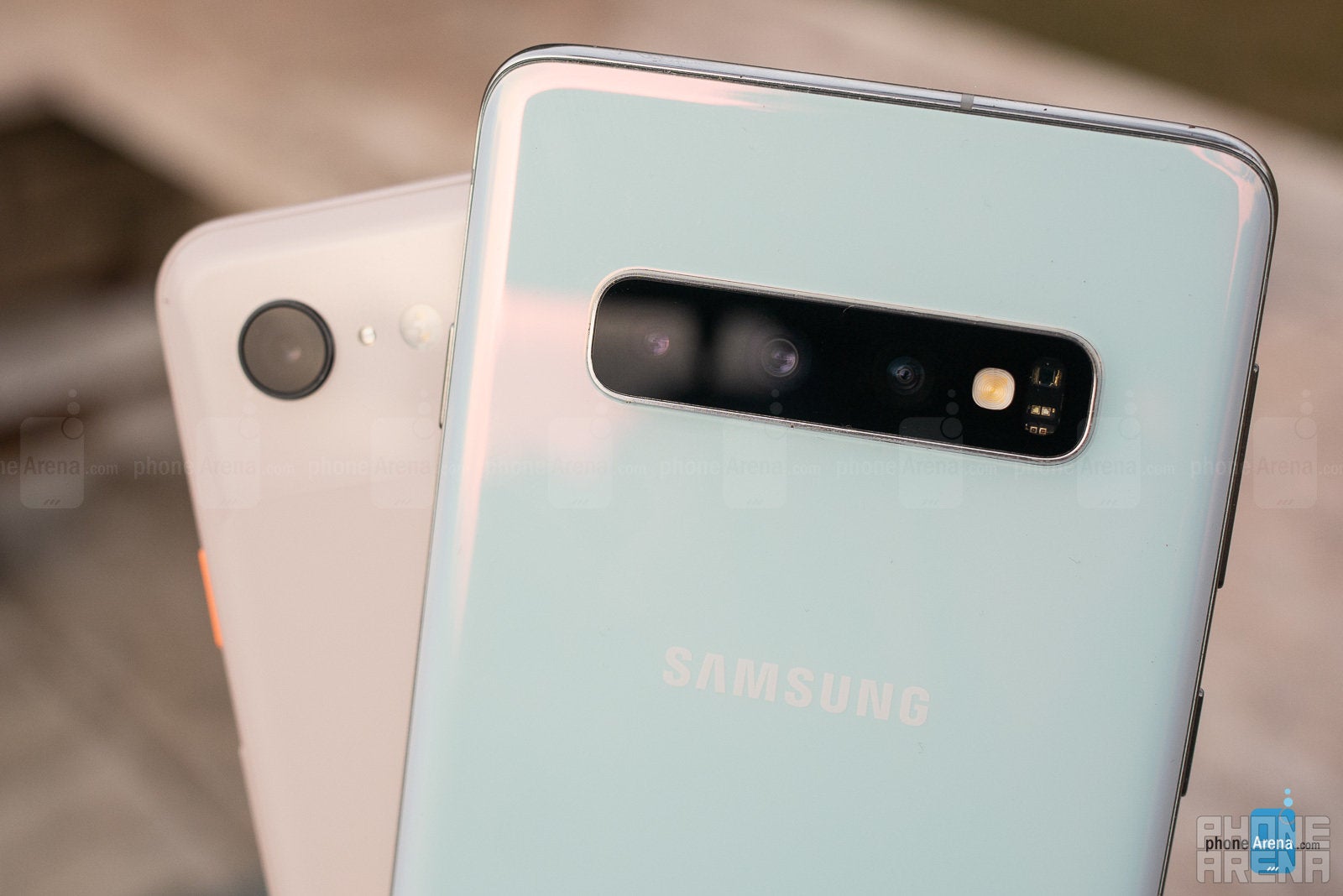
Image Quality
In daytime photos, both the Galaxy S10 and Pixel 3 capture excellent shots, with plenty of detail and accurate colors – there’s not much separating the two here. Sometimes the S10’s tendency to take warmer photos helps liven-up a dreary scenery, while other times the Pixel can eke ahead with its better dynamic range.
These advantages for the Pixel 3 become more prominent as lighting dwindles or becomes more dynamic – even without Night Sight enabled. We’ll firstly say that these are two of the best phones in low-light that we’ve tested – details are maintained well, as are colors – but, the less light there is, the more discernible the S10’s digital image processing becomes. Compared to the S10, Google’s processing on the Pixel 3 often distinguishes itself as more detailed, accurately colored, and altogether more realistic. Pictures on the S10 could seem flat and overly-processed compared to the more three-dimensional textures and accurate coloring of the Pixel 3. To some extent, the more favorable result will be a matter of preference, but the more true-to-life pictures were captured with the Pixel 3.
Portrait mode pictures looked good on both phones in terms of blur application but, as with regular photography, the more-processed, less-realistic-looking photos came out of the Galaxy S10, whereas the Pixel 3 showed more accurate colors and textures.
Telephoto Lens vs Super Res Zoom
One of the main draws of the Galaxy S10 is the triple-camera setup and the versatility which it provides. The telephoto lens, specifically, adds 2X’s optical zoom which, in this case, is doing battle with one of the Pixel 3’s less-talked-about software tricks: Super Res Zoom, a feature which uses the unsteadiness of your hand to capture more photographic information for zoomed in photos.
Selfies
In the selfie department, it’s the Pixel 3 that sports dual cameras – two 8 MP cams, one regular and the other wide-angle – compared to the Galaxy S10’s single 10 MP selfie cam. The S10 does try to mitigate this lack of a wide-angle camera by offering a wider shooting mode in the camera UI, but it’s nowhere close to as wide as the Pixel 3’s secondary camera can capture.
In terms of capturing nice selfies, both of these phones have beauty settings which can be helpful for some to play around with, but both will take pleasing photos in their respective regular modes, as well. The S10 seemed to capture more accurate colors in various lighting, though, while the Pixel 3 has an edge with a its secondary wide-angle camera. Both the S10 and Pixel 3 capture pleasing details and their software separates objects with ease in their respective portrait modes, but we’ll give the edge to the S10 on selfies due to the more accurate color portrayal.
Video
4K videos taken on these two look pretty comparable in image quality and stabilization. Both display a bit of shutter roll but there were no instances of artifacts and only rare stabilization glitches. Otherwise, movement is smooth thanks to optical and electronic stabilization on both.
Videos look great on both, but audio captured on the Pixel 3 sounds compressed compared to the S10. This and the ability to switch between all three cameras while recording push the Galaxy over the edge for us here.


Media
Here we have stereo-speaker setups on both the Pixel 3 and Galaxy S10 which get plenty loud and immersive for video and, if you choose, audio consumption. The Pixel 3 was more prone to crackling at peak volume, while the S10 maintained better composure, and overall, crisper audio top-to-bottom.
The separately-sold USB-C Pixel Buds are quite pleasing to listen to as well, but the AKG headphones offer a bit more punch in the lower-range, while still delivering clear highs. For this, and the better-tuned internal speakers, we’ll go with the S10 on this round.
Battery Life
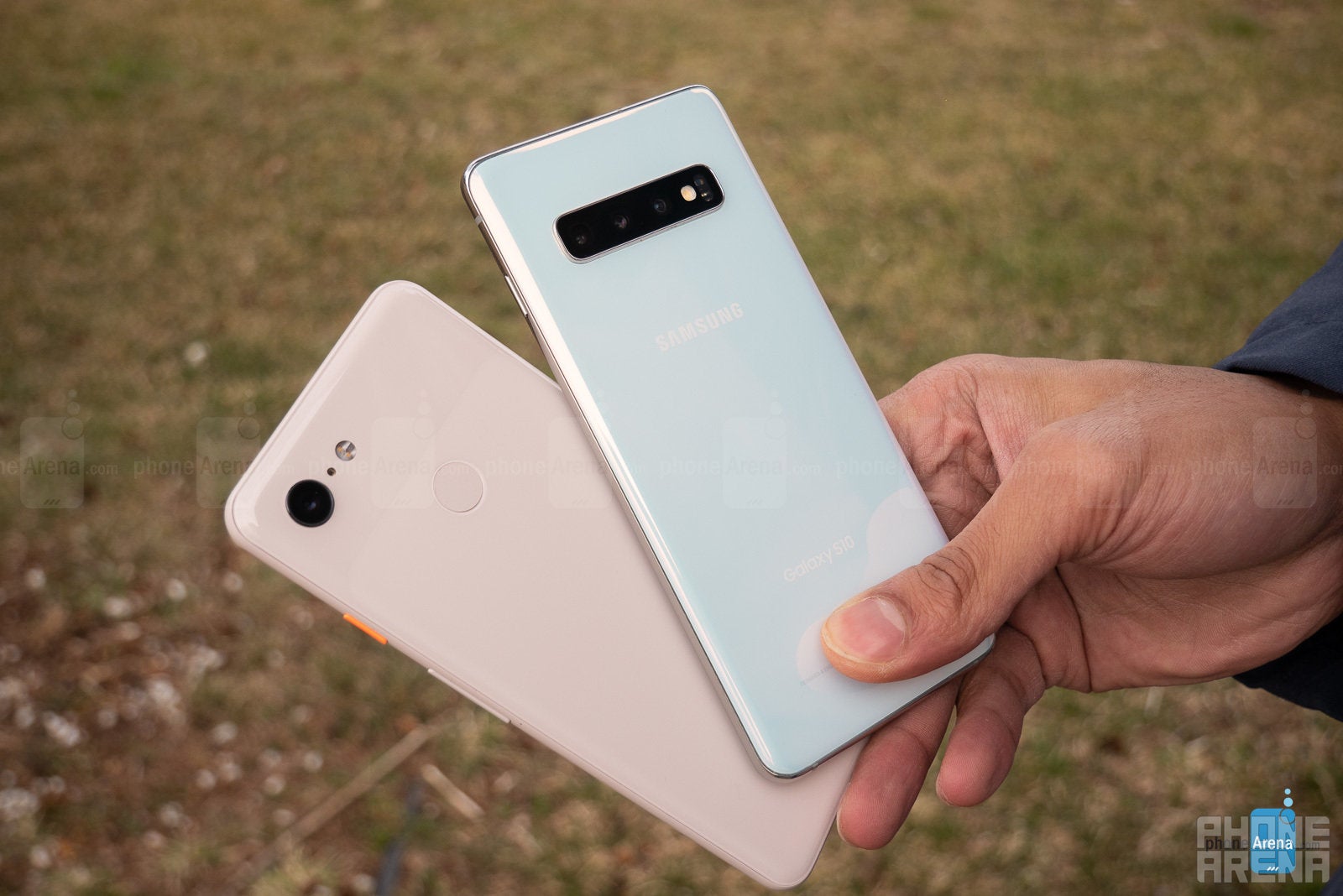
Conclusion
Google’s Pixel 3 and Samsung’s Galaxy S10 are excellent, top-of-the-line phones, and choosing one over the other won’t force you to give up much, but there are some reasons to pick the Galaxy S10.
Firstly, there’s no competition in the looks department; the S10 is one of the most refined, modern, and head-turning devices in all of its colors. Secondly, you’re getting the latest and greatest for Android internals, with plenty of storage to boot. Lastly, you get the versatility of three cameras rather than one on the Pixel 3, although we readily admit the most notable advantage there is in the wide-angle camera, as the Pixel does a very comparable job of digitally zooming in a shot two times versus the S10’s optical solution.

Choosing which one to carry around for months, or even years, may not be a hard choice if you want a great-looking phone for years to come. But choosing a top-performing device for now and for the future? That’s a bit harder to discern.
Google Pixel 3
Pros
- More sophisticated camera software produces more realistic images
- Night Sight magic
- Lightweight, well-supported stock Android
- Reliability of a traditional fingerprint sensor
Samsung Galaxy S10
Pros
- Sophisticated, beautiful, cutting-edge design
- Three cameras for versatile photography
- Very good low-light camera performance
- More customizable UI
- 2019’s top-of-the-line processing within
Follow us on Google News

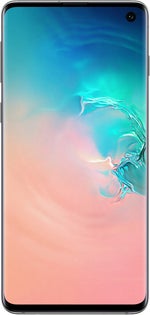





















Things that are NOT allowed:
To help keep our community safe and free from spam, we apply temporary limits to newly created accounts: